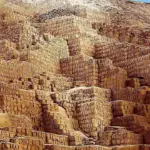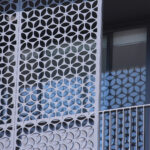Located in the historic city of Rey, near Tehran, Iran, the Toghrol Tower is a fascinating structure that has intrigued historians, engineers, and architects for centuries. Standing at 20 meters high, this ancient tower is a remarkable example of medieval Persian architecture and engineering, blending functionality with symbolism. Built in 1063, the Toghrol Tower has stood the test of time, offering a glimpse into the architectural ingenuity of the Seljuk period.

Historical Significance of the Toghrol Tower
The Toghrol Tower is traditionally believed to have been constructed as the tomb of Tuğrul Beg, the founder of the Seljuk dynasty. Tuğrul Beg played a pivotal role in establishing the Seljuk Empire, which dominated much of the Middle East and Central Asia during the 11th and 12th centuries. His contributions to the political and cultural development of the region earned him significant recognition, and it was only fitting that such a towering monument be built in his honor.
However, while many historians believe the Toghrol Tower was intended as a mausoleum, there are differing opinions regarding its exact purpose. Some scholars suggest that it may have functioned as a beacon, guiding Silk Road travelers through the foggy terrain surrounding Rey. The tower’s strategic location, combined with its unique construction, would have made it an ideal navigational aid for merchants and caravans journeying along the ancient trade route.

Architectural Design and Engineering Marvels
The Toghrol Tower’s design is a testament to the advanced architectural knowledge of the time. Constructed from bricks and Sarooj, a special waterproof mortar that has helped preserve the tower’s integrity for centuries, the structure stands as a remarkable achievement in ancient engineering. Its distinct geometry sets it apart from other towers of its era.
The Internal and External Shapes
One of the most striking features of the Toghrol Tower is its geometric structure. The internal surface of the tower is a smooth, cylindrical shape with an 11-meter diameter. This design element creates a vast and open interior space, showcasing the architect’s understanding of proportions and stability.
On the outside, the tower is shaped like a polygon with 24 angles. The vertices of this polygon form a circle that is 16 meters in diameter. This polygonal structure not only adds to the aesthetic appeal of the tower but also enhances its stability. The 24 angles and thick walls provide the tower with the strength needed to withstand natural forces such as earthquakes, which are prevalent in the region.

A Clockwork Device in the Sky
Another fascinating aspect of the Toghrol Tower is its ability to function as a natural timepiece. The unique polygonal shape of the tower plays a crucial role in this timekeeping mechanism. As the sun moves across the sky, the shadows cast by the tower’s 24 corners mark the passage of time. Each time one of the corners catches the sunlight, it indicates that an hour has passed since dawn. This early form of a solar clock would have been an essential tool for the people of Rey, who relied on the sun’s movements for daily activities.
The fact that the tower could double as a timekeeping device is a reflection of the Seljuk dynasty’s ability to blend art, engineering, and practicality in their architectural designs. The Toghrol Tower is not just a monument to Tuğrul Beg’s legacy, but also an early example of how architecture can serve multiple functions—both symbolic and practical.
Cultural and Archaeological Importance
Today, the Toghrol Tower stands as an important cultural and archaeological site. Its historical significance, combined with its unique architectural features, makes it an invaluable asset for the city of Rey and Iran as a whole. The tower is a symbol of the rich history and achievements of the Seljuk period and remains a source of pride for Iranians.
Like Us on Facebook!
The Toghrol Tower’s preservation and continued study have also contributed significantly to our understanding of medieval Persian architecture. Archaeologists and historians have worked tirelessly to uncover the mysteries of the tower’s construction and use, ensuring that its story continues to inspire future generations.
Subscribe Us on YouTube!
Conclusion: A Legacy of Innovation and History
The Toghrol Tower is more than just a structure; it is a testament to the ingenuity and cultural heritage of the Seljuk dynasty. Whether serving as a tomb for Tuğrul Beg or as a beacon for travelers, the tower’s design is a masterpiece of ancient engineering. Its ability to tell time through the shadows of its polygonal walls showcases the sophisticated understanding of astronomy and geometry possessed by the people who built it.
As a historical and architectural marvel, the Toghrol Tower continues to captivate those who visit it, offering a window into the past and a reminder of the enduring legacy of Persia’s great civilizations.



















